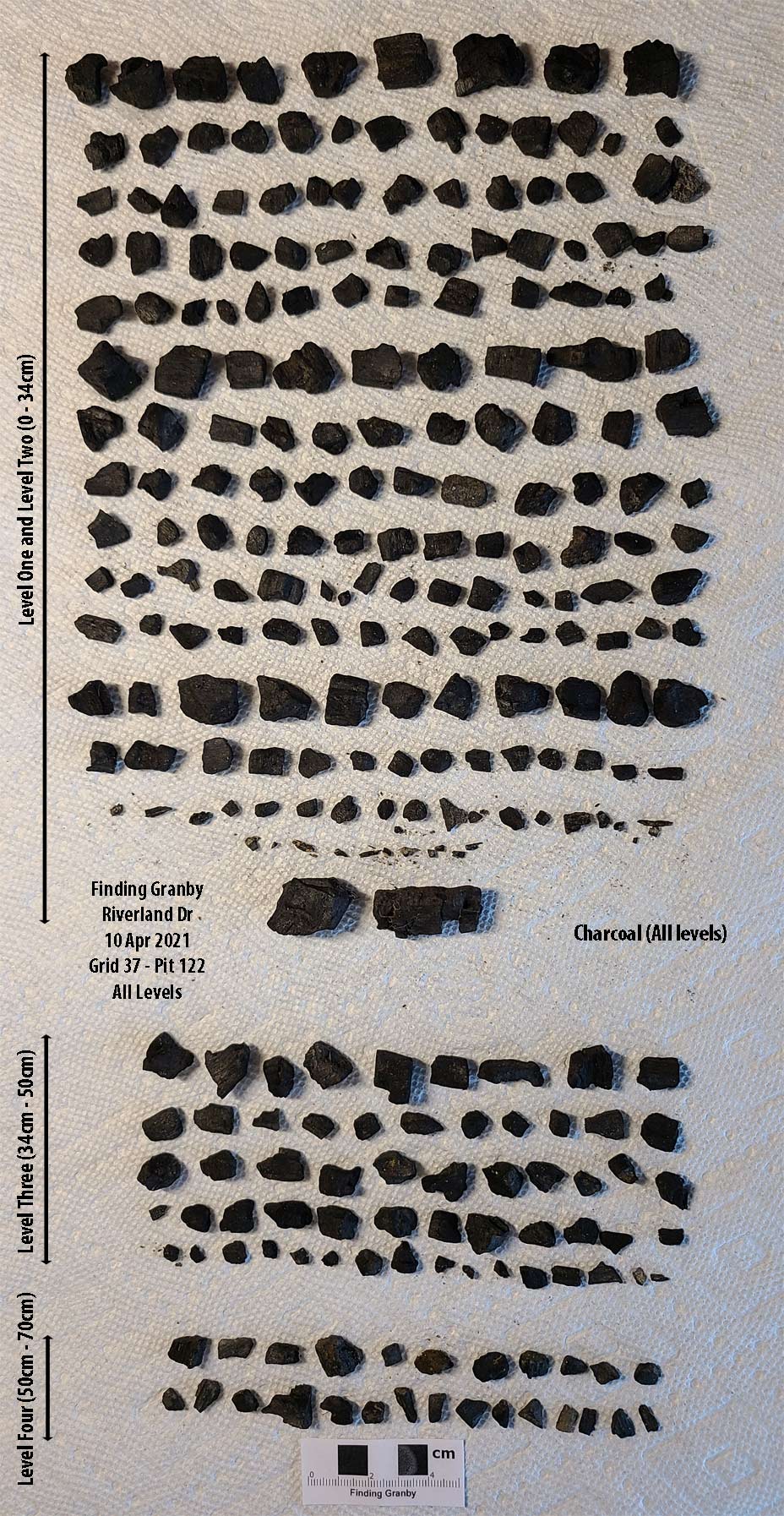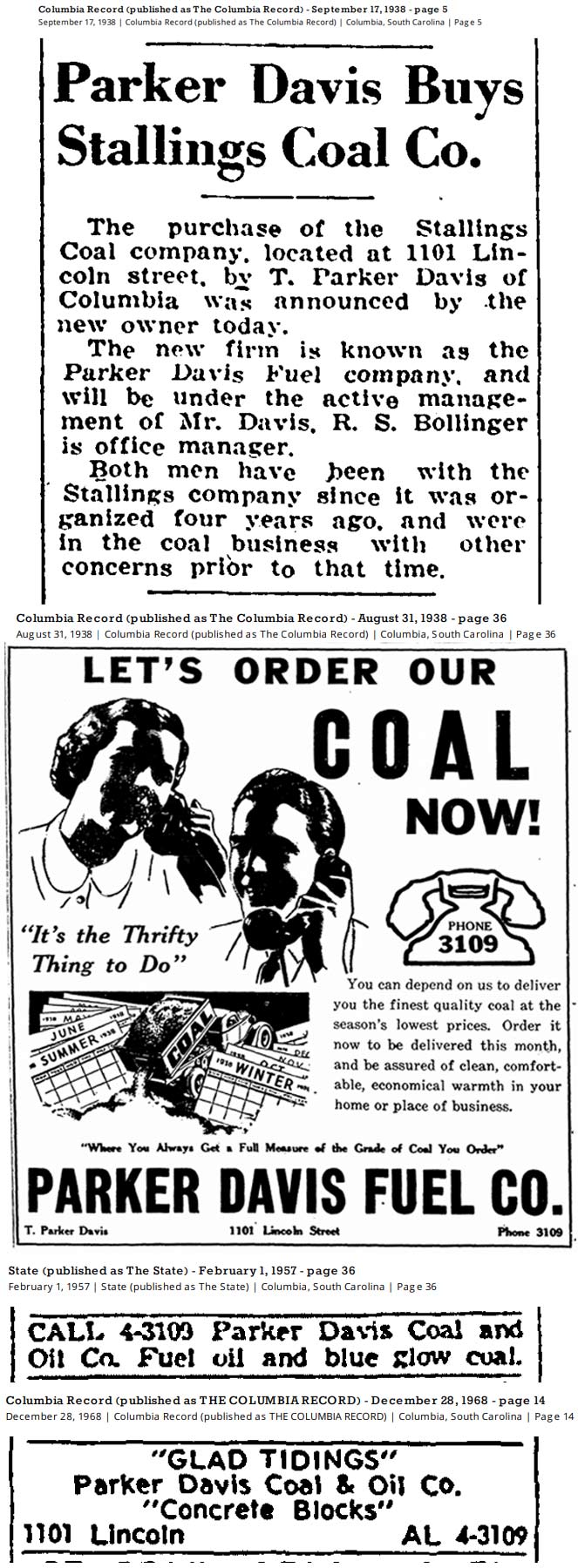Pit 122: Level 1
Completed on April 10, 2021 by Kim Masters, Stephany North, Jocelyn and DC Locke, Odess and David Brinkman. For pit 122, we continued in a direction to intercept the 1939 aerial photo feature (a dark line in the freshly plowed 1939 soil that could be a remnant of Granby slave quarters.) We may have already begun hitting this feature in pit 121 with the large numbers of wood charcoal and partially burned wood posts that went below the typical ground depth of Granby. As far as artifacts go, we found more low-quality whiteware pottery (like in pit 121) and a stoneware piece. An even greater quantity of large wood charcoal pieces was found. Being that these were found in level one, we still think that the foundation excavation of the 1960s carport may have moved charcoal from that location to the top of pits 121 and 122. Also found were two more items often found in the archaeology of slave quarters: a piece of chalk and a shell (African customs account for the chalk and the eating of seafood which was not popular with the European Granby people.) Also found were a couple of pieces of possible 18th-century mortar. Among the modern items was a 1960s plastic button/tag that was probably attached to an oil tank that may have sat on the concrete floor in the back of the carport. The button/tag was from the Parker Davis Fuel Company, which operated from 1938 to about 1980. Their main office was where today's Columbia Metropolitan Convention Center is located. This little find solves a mystery with today's dig house. When we bought the house in 2010, it had two broken furnaces inside. One had been placed inside the closet at the backend of the hallway, and we could see how a Natural gas line had been added to connect with that. The original furnace was a nasty mess to remove, and we now know it used oil as fuel. This probably explains the thick coat of oil that was all over the walls and cabinets in the house. It took six coats of Kilz to get rid of that greasy mess.
Pit 122: Level 1 produced: Three pieces of pottery, one lead slag, 7 Native American, two old mortar, one chalk, 11 nails, and 284 charcoal. Many modern items, mostly from the 1960s


